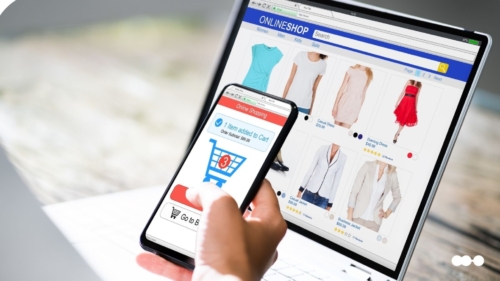ARTICLE SUMMARY
Customer onboarding refers to all steps to introduce a new customer to your company product or service. That’s the moment you build a pathway to converge the value your customer expects and what you can offer. The onboarding is a vital moment to make clients happy and open opportunities to upsells and renewals.

What defines customer onboarding the best is: all activities involved in introducing a new customer to your company product or service. It’s about teaching the new client how to get the most out of your product/service. Onboarding new customers involve listening to their questions and concerns and answering them. It’s about making their experience as smooth as possible.
Find the right tool to automate your onboarding process with the Buyer’s Guide to Automation Platforms
What is customer onboarding process?
“Customer onboarding refers to the process of gradually and effectively showing the customer everything you have to offer”
If you fail to do so, you’ll be making a bad impression with your customers. That’s one of the main reasons why customers leave and never come back.
Attracting new customers and selling to them is 5 to 25 times—depending on your industry—more expensive than retaining and expanding the accounts of your current customers. However, on average, only 18% of the companies focus more on Customer Retention, while 44% focus on Customer Acquisition.
When does Customer Onboarding begin?

The best answer would be when the sale is done. Many people think that the sale process ends when the customer signs at the dotted line. That’s not true, though. Your job is only halfway done.
Some companies have separate teams for dealing with the selling part (the sales team) and the onboarding/support part (usually, customer success teams). Either way, having money on the bank doesn’t mean the sale is done.
Whether the sales team handles the onboarding by itself or transfers to the customer success team, the sale process will be completed at the end of a stage of the process (sale) and at the beginning of the next one (customer onboarding).
Selling your product/service is only half of the job because the sale would be meaningless if you fail to deliver what you offered and/or if you don’t provide instructions and support. That’s why the key point at this stage is to understand what kind of value each new customer expects from your business.
The greatest goal is to figure out their desired outcome, and together, build a pathway to achieve it.
The whole concept of onboarding revolves around bringing the customer “on board”. It’s more than just providing all the information the customer needs to properly experience your product/service; it’s about understanding them and their needs.
Why is Customer Onboarding so important?

Let me ask you a question: how important it is to you to keep your customers happy (and coming back for more)? That’s just how important a successful customer onboarding is.
The customer onboarding process is all about delivering the customer what was purchased within the agreed-upon conditions. Basically, it means continuing to give what you offered and to which the customer agreed.
It seems rather obvious that there aren’t many companies that think like that. That’s why so many customers are willing to pay more for a company that serves them better.
Properly handling your customer onboarding will result in happy customers. We’ve testified that. That’s not all you get by properly onboarding your customers, though. There are other benefits, such as:
- Your customers will come back for more: Happy customers are a lot more prone to buying from you again and becoming loyal customers than unhappy ones. Loyal customers are a very valuable asset for your business. As mentioned above, acquiring a new customer is (much) more expensive than maintaining the one you already have
- Your customers will tell their friends about you: Have you ever heard of word-of-mouth marketing? It happens when your satisfied customers recommend you to their network
- Shorten the Time to Value: Saving time is very important for recurring-revenue companies because they need to engage and prove their value every month
- Control the avoidable churn: It usually occurs with clients that fit your business model but don’t understand the value of your product or service
How to Implement a Customer Onboarding Process
Although there are many ways to control your Onboarding process, it’s important to standardize your execution. Using a Customer Onboarding tool is the best option to have a structured and effective process. And that’s exactly what Pipefy does.
Pipefy allows you to:
- Standardize your implementation flow to maintain the process quality
- Centralize all processes in a single platform and integrate with other departments
- Measure your process efficiency and identify your bottlenecks
With it, you’ll be able to confirm that every new client is going through the same steps, measure your process efficiency and probably reduce the customer churn rate.
Learn how to use our Customer Onboarding template and start improving your process.







